Related Research Articles

American Sign Language (ASL) is a natural language that serves as the predominant sign language of Deaf communities in the United States of America and most of Anglophone Canada. ASL is a complete and organized visual language that is expressed by employing both manual and nonmanual features. Besides North America, dialects of ASL and ASL-based creoles are used in many countries around the world, including much of West Africa and parts of Southeast Asia. ASL is also widely learned as a second language, serving as a lingua franca. ASL is most closely related to French Sign Language (LSF). It has been proposed that ASL is a creole language of LSF, although ASL shows features atypical of creole languages, such as agglutinative morphology.

Sign languages are languages that use the visual-manual modality to convey meaning, instead of spoken words. Sign languages are expressed through manual articulation in combination with non-manual markers. Sign languages are full-fledged natural languages with their own grammar and lexicon. Sign languages are not universal and are usually not mutually intelligible, although there are also similarities among different sign languages.
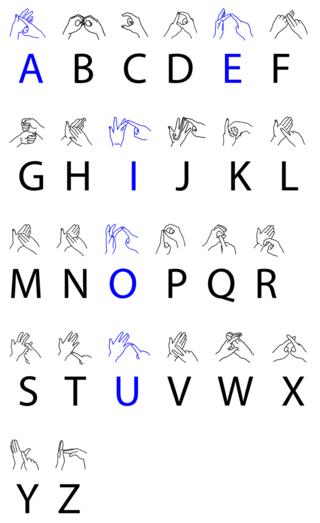
British Sign Language (BSL) is a sign language used in the United Kingdom (UK), and is the first or preferred language among the Deaf community in the UK. Based on the percentage of people who reported 'using British Sign Language at home' on the 2011 Scottish Census, the British Deaf Association estimates there are 151,000 BSL users in the UK, of which 87,000 are Deaf. By contrast, in the 2011 England and Wales Census 15,000 people living in England and Wales reported themselves using BSL as their main language. People who are not deaf may also use BSL, as hearing relatives of deaf people, sign language interpreters or as a result of other contact with the British Deaf community. The language makes use of space and involves movement of the hands, body, face, and head.
Adamorobe Sign Language or Adasl is a village sign language used in Adamorobe, an Akan village in eastern Ghana. It is used by about 30 deaf and 1370 hearing people (2003).
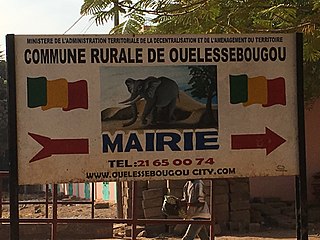
Mali is a multilingual country. The languages spoken there reflect ancient settlement patterns, migrations, and its long history. Ethnologue counts more than 80 languages. Of these, French is the official language and Bambara is the most widely spoken. All together 13 of the indigenous languages of Mali have the legal status of national language.
Icelandic Sign Language is the sign language of the deaf community in Iceland. It is based on Danish Sign Language; until 1910, deaf Icelandic people were sent to school in Denmark, but the languages have diverged since then. It is officially recognized by the state and regulated by a national committee.
Indo-Pakistani Sign Language (IPSL) is the predominant sign language in the subcontinent of South Asia, used by at least 15 million deaf signers. As with many sign languages, it is difficult to estimate numbers with any certainty, as the Census of India does not list sign languages and most studies have focused on the north and urban areas. As of 2021, it is the most used sign language in the world, and Ethnologue ranks it as the 151st most "spoken" language in the world.

Thai Sign Language (TSL), or Modern Standard Thai Sign Language (MSTSL), is the national sign language of Thailand's deaf community and is used in most parts of the country by the 20 percent of the estimated 56,000 pre-linguistically deaf people who go to school.
Chinese Sign Language is the official sign language of the People's Republic of China. It is unrelated to Taiwanese Sign Language and is known in the Republic of China as Wénfǎ Shǒuyǔ.

Education in Mali is considered a fundamental right of Malians. For most of Mali's history, the government split primary education into two cycles which allowed Malian students to take examinations to gain admission to secondary, tertiary, or higher education. Mali has recently seen large increases in school enrollment due to educational reforms.
The Tebul language, also known as Tebul Ure, is a Dogon language spoken in Mali by the Tebul U. It was first reported under this name online by Roger Blench, who erroneously reported that it appears to be the same as a language called Oru Yille in the literature. This mistaken name instead means 'two words' in the Tebul language.
Bamako Sign Language, also known as Malian Sign Language, or LaSiMa, is a sign language that developed outside the Malian educational system, in the urban tea-circles of Bamako where deaf men gathered after work. It is used predominantly by men, and is threatened by the educational use of American Sign Language, which is the language of instruction for those deaf children who go to school.
A village sign language, or village sign, also known as a shared sign language, is a local indigenous sign language used by both deaf and hearing in an area with a high incidence of congenital deafness. Meir et al. define a village sign language as one which "arise[s] in an existing, relatively insular community into which a number of deaf children are born." The term "rural sign language" refers to almost the same concept. In many cases, the sign language is known throughout the community by a large portion of the hearing population. These languages generally include signs derived from gestures used by the hearing population, so that neighboring village sign languages may be lexically similar without being actually related, due to local similarities in cultural gestures which preceded the sign languages. Most village sign languages are endangered due to the spread of formal education for the deaf, which use or generate deaf-community sign languages, such as a national or foreign sign language.
A deaf-community or urban sign language is a sign language that emerges when deaf people who do not have a common language come together and form a community. This may be a formal situation, such as the establishment of a school for deaf students, or informal, such as migration to cities for employment and the subsequent gathering of deaf people for social purposes. An example of the first is Nicaraguan Sign Language, which emerged when deaf children in Nicaragua were brought together for the first time, and received only oral education; of the latter, Bamako Sign Language, which emerged among the tea circles of the uneducated deaf in the capital of Mali. Nicaraguan SL is now a language of instruction and is recognized as the national sign language; Bamako SL is not, and is threatened by the use of American Sign Language in schools for the deaf.
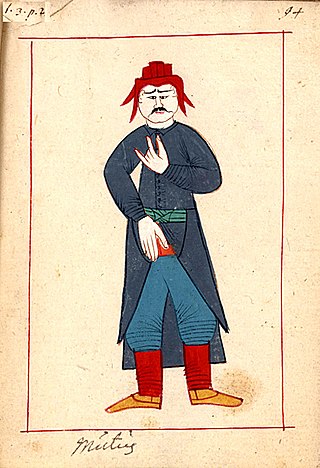
Ottoman Sign Language, also known as Seraglio Sign Language or Harem Sign Language, was a deaf sign language of the Ottoman court in Istanbul. Nothing is known of it directly, but it is reported that it could communicate ideas of any complexity, and that it was passed on to the young through fables, histories, and scripture.
Douentza Sign Language, or Dogon Sign Language is a community sign language spoken in Douentza and neighboring communities in the Dogon country in Mali. It is unknown how similar it may be to the nearby village sign language, Tebul Sign Language, but it may be unrelated to another sign language of the Dogon region, Berbey Sign Language. As of 2013, there is no school for the deaf in the area, but one is planned; the introduction of American Sign Language as the language of instruction may affect Douentza Sign. A video corpus has been collected by the Max Planck Institute for Psycholinguistics to document the pre-contact form of the language.
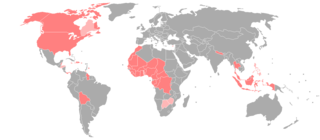
American Sign Language (ASL) developed in the United States and Canada, but has spread around the world. Local varieties have developed in many countries, but there is little research on which should be considered dialects of ASL and which have diverged to the point of being distinct languages.
Rossel Island Sign Language is a village sign language of Rossel Island, Papua New Guinea reported by Stephen Levinson. He reports that,
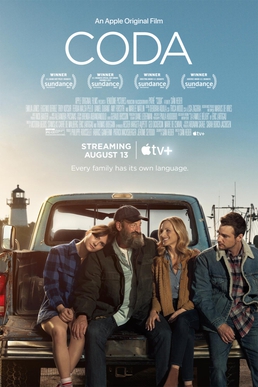
CODA is a 2021 coming-of-age comedy-drama film written and directed by Sian Heder. An English-language remake of the 2014 French-Belgian film La Famille Bélier, it stars Emilia Jones as Ruby Rossi, the titular child of deaf adults (CODA) and only hearing member of her family, a teenager who attempts to help her family's struggling fishing business while pursuing her own aspirations of being a singer. The movie uses deaf actors to play the deaf characters, who, along with Jones, communicate using American Sign Language. Eugenio Derbez, Troy Kotsur, Ferdia Walsh-Peelo, Daniel Durant, and Marlee Matlin are featured in supporting roles. An international co-production between the United States and France, with Philippe Rousselet of La Famille Bélier reprising his role as producer, it was filmed on location in Gloucester, Massachusetts, in the United States.
References
- 1 2 Nargess Asghari (2019) Iconicity in the Semantic Domain of Animals in the Emerging Family Sign Language of Berbey (Mali)